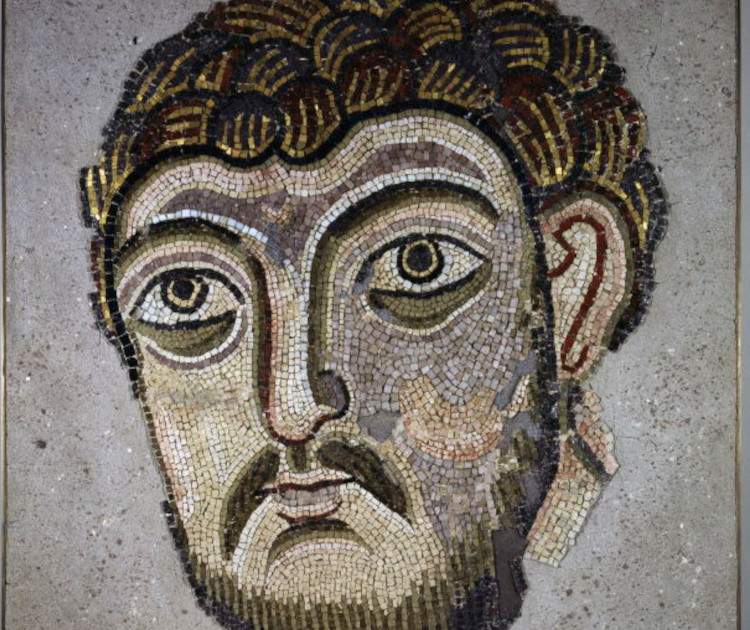From October 21, 2022 to February 5, 2023, the Museo di Roma in Palazzo Braschi will host the exhibition Medieval Rome. The Lost Face of the City, curated by Anna Maria D’Achille and Marina Righetti, which aims to rediscover the lost face of Rome between the 6th and 14th centuries and its pivotal role in Christian and medieval Europe for both pilgrims and rulers and emperors.
More than 160 works, including mosaics, frescoes and movable works, covering a time span from the 6th to the 14th century, from the time of Pope Gregory the Great to the convening of the first Jubilee in 1300, from sixty lenders including museums, religious bodies and public and private institutions, will be on display. The works will be divided into nine main thematic nuclei with the intention of shedding light on the appearance of a city still partly surviving, though often hidden. Documents mostly from Roman places and collections will also be on display, with the aim of inviting Roman citizens to rediscover the riches of their city.
The public is accompanied between the historical, architectural and artistic folds of medieval Rome, through its most iconic places, such as basilicas and palaces, but also thanks to the reconstruction of the environmental context, now profoundly modified. The immersion in the reality of the Roman Middle Ages is then deepened by analyzing the rich commissions of popes and cardinals, the activity of artists and artisan workshops that contributed to the fascination exerted by the Urbe, a pilgrimage destination also for kings and emperors.
Visitors will be guided by educational apparatuses and the catalog edited by scholars who, in more than forty years of study and research, have led to unveiling the medieval face of the city. The itinerary, an ideal journey to Rome, puts the visitor in the shoes of the medieval pilgrim who, immersed in the charm of ancient Rome, was animated by the desire to come into contact with the earliest evidence of Christianity and the relics of martyrs. The presence of the papal see made the Urbe a major political hub, at the center of complex political and diplomatic entanglements.
You will then discover the importance held by some of the most iconic places in medieval Rome, both religiously and politically: the vast Lateran complex, the first Christian basilica, Rome’s cathedral and the seat of the popes during the Middle Ages; St. Peter’s in the Vatican, the site of Peter’s tomb and a pilgrimage destination from all of Christian Europe; St. Paul’s Outside the Walls, memorial of the Apostle of the Gentiles; and St. Mary Major, custodian of the relics of the Nativity and the first basilica dedicated to the Virgin. Monuments that are profoundly changed today, but of which medieval vestiges of fundamental importance are still preserved. Through a focused selection of objects, a glimpse is offered of the vastness of the four basilica complexes and the wealth of works of art that connoted these places.
Particular attention will be paid to the privileged relationship between the city and the papacy. A complex relationship that united, as well as identified, the Urbe and its pontiffs throughout the Middle Ages. The public will thus be able to get to know the most representative popes of the time, such as Gregory the Great, Leo III, Innocent III and Boniface VIII, protagonists of key moments of the Middle Ages. The museum’s large hall will be scenographically dedicated to an ideal walk through the sacred space of a medieval church, in which numerous movable objects, such as frescoes and liturgical furnishings, as well as precious reliquaries and ornaments, are offered to take visitors on a journey back in time, on the traces of medieval liturgy. The re-presentation of the sacred space is also an opportunity to delve into some particular aspects, such as that of popular Roman devotion, with a special focus all dedicated to the Marian icons still preserved in the city’s churches; or the emblematic case of the fresco decoration from Santa Croce in Gerusalemme. A citizen, a pilgrim or a visitor who walked the streets of medieval Rome had before his eyes a completely different city than the present one. Punctuating the exhibition route are two urban interludes that, with the help of engravings and drawings, restore, in part, the lost medieval face of the city. The exhibition route thus also aims to make people reflect on how people lived in Rome in the Middle Ages. A series of small but precious objects from the Crypta Balbi tells the visitor stories of daily life made up of workshops, artists and artisans.
The exhibition concludes with a room dedicated to the Jewish community that settled in Rome as early as the second century BC. Rome then, by its very nature as a center of power, political, economic and religious, has always been at the center of a dense interweaving of cultures. A number of manuscripts testify, albeit partially, to the level of this extraordinary koine.
The exhibition is promoted by Roma Culture, Sovrintendenza Capitolina ai Beni Culturali, in collaboration with Sapienza University of Rome - Department of History Anthropology Religions Art Performance, and organized by Zètema Progetto Cultura.
Hours: Tuesday through Sunday from 10 a.m. to 7 p.m. Closed Tuesdays.
Image: Manly head (St. Luke the Evangelist) (Second quarter 13th century; mosaic; Vatican City, Vatican Museums) Credits @Governorship SCV-Direction of Museums. All rights reserved.
 |
| Palazzo Braschi rediscovers the lost face of medieval Rome |
Warning: the translation into English of the original Italian article was created using automatic tools. We undertake to review all articles, but we do not guarantee the total absence of inaccuracies in the translation due to the program. You can find the original by clicking on the ITA button. If you find any mistake,please contact us.